Local scullers Eric and Percy See not only competed successfully in their sport, but were also involved in the organisation of regattas and events and, in later life, acted as officials at regattas and coached many Grafton rowers and scullers.
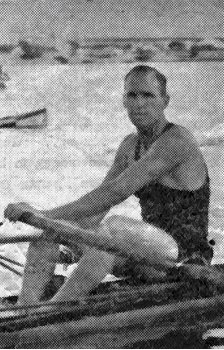
Some current masters rowers remember the Sees, calling them “legends in the world of rowing who were always helping train the juniors.” Young scullers would regularly row past the See property at Carrs Creek, hoping they would be noticed and get some extra coaching.
These masters tell stories of being excited to be on the water with the legendary Sees. Eric and Percy would scull a set distance apart and have scullers work back and forth between them, each of the champion scullers giving tips to the young scullers as they turned their boats around to head back again.
The See family were already prominent in the Grafton area when Eric’s father, Sam See, decided to move his family from their Hunter region farm following the devastating floods of the 1890s – See Park in Grafton and Seelands were named after Samuel See, an uncle of the family who had been Mayor of Grafton and was one of the founders of Grafton Rowing Club. Eric’s family took over a farming property at Carrs Peninsula.
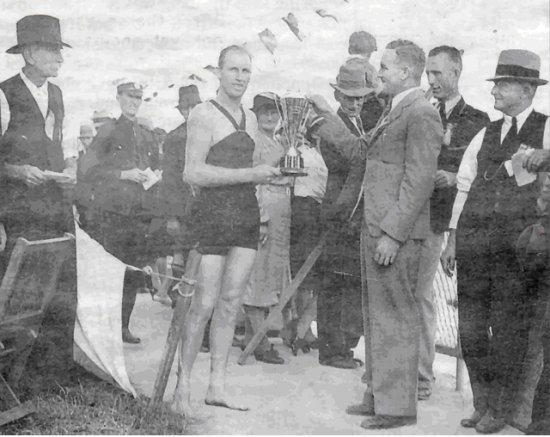
Eric did not take up rowing until 1928, when he turned 18. After working hard on the family farm, Eric “broke out”, taking steps that would change his life forever:
“My father was a commodore skipper, a determined man of the old school, one who had to be in charge, had to own everything.
“I had worked on the farm for five years but he never paid me any wages. I never had any money. Everything I had, he owned.
“We were all provided for, but if we asked for anything he would just say ‘You’ll get the lot when I’m gone’.
“Then one day I got really cranky and I broke out. I hopped on my bike and rode into town.
“I went down to the waterfront and Bill Weiley was there with some of the Water Brigade rowers.
“I thought that looked pretty good so I joined the water brigade. Then I went to Mary Plummer’s shop in the middle of the block and joined up with the football team.
“Then I went to the dance hall at the Criterion and signed up to learn to dance.”
These three steps changed Eric’s life as:
- Football brought him new friends, travel and recognition as a top-class sportsman (although Eric quite humbly says “I was never a champion at football, but I was a good worker in the backs”)
- Rowing with the water brigade brought him a lifelong love of the sport as well as further recognition as a sportsman
- Dancing introduced him to Amy Davey who was to be his wife and partner for over 60 years
Eric started rowing halfway through the 1928 season but he quickly became a good rower and stroke of a crew, competing in regular flood boat flutters.
He also borrowed a Gladstone skiff from Les Walters, successfully competing in a number of events before convincing his father to buy an outrigger (single scull) which he also raced successfully all around the Northern Rivers.
Through all this, Eric continued to work on the farm for little money, but loved his rowing. With little pay and in the midst of the depression, Eric usually used his regatta winnings to attend dances and shows, occasionally borrowing Dick Hastings’ suit for special occasions.
The Richmond-based sculler Snowy Burns later invited Eric to be his pacemaker as he prepared for his successful challenge for the Australian Championship.
Eric also completed two weeks training in Woodburn with Eddie Larsen (known as “the Prince of Trainers”) to hone his skills and focus his mental approach to sculling, but Eric and Amy married in 1939 and, by the end of the war, Eric had ceased top level sporting competition, settling down to concentrate on his family and running the farm.
Eric and Percy See were both excellent scullers, although Eric always (quite humbly) said that Percy was the better of the two. Percy did go further than Eric as he was recognised as one of the best in the world when he was invited to Canada to scull in exhibitions.
Like Eric, Percy raced in all classes of boats including skiffs, sculls and flood boats. He was actually stroke of one of the crews in a famous three-way dead-heat in flood boats in 1940:
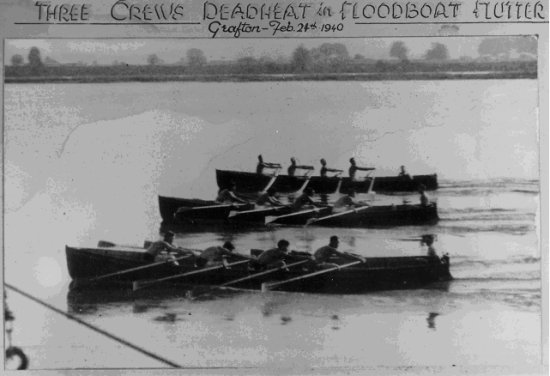
In 1937, Australian Olympic sculling legend Bobby Pearce, who had run out of opponents in North America, arranged for the Canadian National Exhibition to invite Evans Paddon (Australian Champion), Percy See, Jim Paddon (manager & Evan’s father) and George Cook (NSW Champion) to go to Toronto and scull in exhibitions.
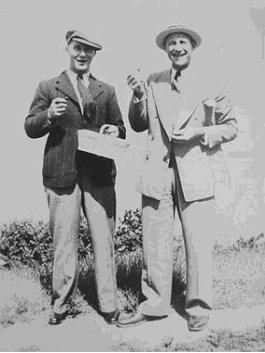
Bobby Pearce in Canada in 1938
Reports of the trip mention an unpleasant aspect of the passage, as it was the roughest crossing of the Tasman Sea in 18 years and no one was allowed on deck for two days – on the third day ropes were set up to hang on to.
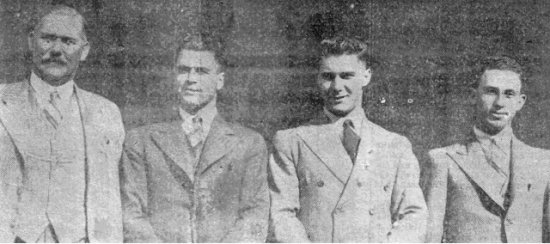
As guests of the Argonaut Rowing Club, Bobby, Evans, Percy and George sculled in twelve exhibitions on Lake Ontario over distances of one quarter, one and three miles. The “Scullers from Down Under” were there “to show the northern hemisphere scullers how it was done.”
In a letter to the Secretary of Grafton Rowing Club, dated July 8, 1938, Percy gives the following news from Toronto:
Pearce is about 6ft tall and has wide shoulders. He weighs about 192lbs when in condition. He keeps himself in fair condition all the time and is a teetotaller. He rows every day through the summer and does sports in the winter to keep himself fit.
Pearce has entertained our party at Toronto, but is a worried man as his wife is very ill.
The course on which the race will be rowed is in the Toronto Exhibition Grounds. It is a mile long, with buoys for turns at each end. A wall has been built about 150 yards from the shore and the course is inside the wall. There is a gap in the wall and a swell comes in from the lake…
Our party has received much assistance from the Argonauts Rowing Club, whose sheds are situated on the course. We will house our sculls at the club, which is one of the largest in Canada, having 30 privately owned outriggers and about 20 each of other classes, eights, fours and double sculls. There is also a heavy outrigger about the same weight as the Gladstone Skiffs so well known on the Northern Rivers.
A match race between World Champion Pearce and Australian Champion Paddon was staged over three miles with Pearce retaining his World Title easily. Tragically, Pearce’s wife died of cancer only a few days before this championship race.
